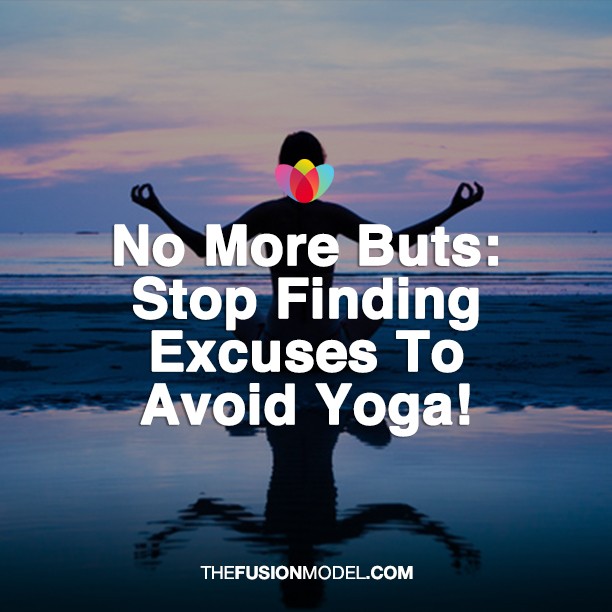The history of yoga — a practice that focuses on conscious movement, breathing and meditation — dates back more than 5,000 years. It was initially used by those who wanted to achieve greater personal freedom, health and longevity.
The practice has evolved over the millennia — and today, physicians, yoga instructors and practitioners alike herald its many benefits, including increased flexibility and strength (for better posture) and improved lung capacity (a key component to aerobic fitness). Most practitioners also feel less stressed and more relaxed after doing yoga, which improves concentration and mood while lowering blood pressure.
Still, it can be hard to walk into your first yoga class. But concerns that you won’t be as flexible as your peers or won’t be able to calm your mind all the way through the entire class shouldn’t hold you back.
We’ve compiled a list of the top excuses people use to avoid trying yoga, and asked our favorite instructors to debunk them. See if any of these sound familiar…
But… I’m not flexible
That’s exactly why you should do yoga! Many people who have never practiced before (especially men) are intimidated because they think they won’t be able to hold some of the same poses as their peers. Other times, they may feel their lack of flexibility could be limiting. “Getting a group of guys together for a class works wonders,” says Kendra Coppey Fitzgerald, a New York City yoga instructor since 2007. “Helping guys feel successful, on their turf, is the key to avoiding that excuse.”
But… I have bad knees, hips and/or shoulders
People who are dealing with injuries may be hesitant to try yoga. “Taking two or three private or semi-private yoga classes with an instructor who has a strong background in anatomy can be incredibly helpful,” Coppey Fitzgerald says. “In a private session, the instructor can find poses that work specifically for your needs, taking injuries into consideration.”
But… I’m too fat
“You’re never too anything to try yoga,” says yoga teacher Melanie Woodrow. “Yoga is for every body and everybody.”
The goal with yoga is to improve your body and state of mind — whether you’re trying to build stability and flexibility or to relax by focusing on your breathing. “The student who is listening inwardly is actually more advanced than the student ignoring how he or she feels and muscling through the posture that looks more complicated or fancy,” Woodrow says.
But… I’m not a “yoga person.”
The stereotype of the yoga practitioner — a ponytailed hippie sitting in Lotus Pose and reeking of patchouli — can deter some.
Catherine Tingey, a yoga instructor who has been practicing for 21 years, says yoga is for anyone in need of a solid workout. “I love it when people come to my class and are surprised that we can begin class with a simple breathing exercise and end in a blissed-out pool of sweat,” she says. “It’s not just [about] stretching.”
But… I’m not religious
With the attention on breathing and meditation, it’s easy to understand why some people believe that yoga is religious or spiritual. “While there are classes that push you in that direction, your average yoga class in a gym should be focused on moving your body through a series of postures while maintaining a calm and steady breath,” Tingey says.
But… yoga is boring
You’re probably the type of person who needs an iPod for your morning run or a high-energy spin instructor to blast techno music and shout encouragement. That’s OK. Just understand that there’s a place and time for yoga, too. “Yoga teaches you to be still and present in your body, even in the midst of challenges and discomfort,” Tingey says. “These lessons are highly applicable off the mat, too.”
You won’t become a great yogini overnight, but if you try a class or buy your own mat and practice at home, then you’re heading in the right direction.




